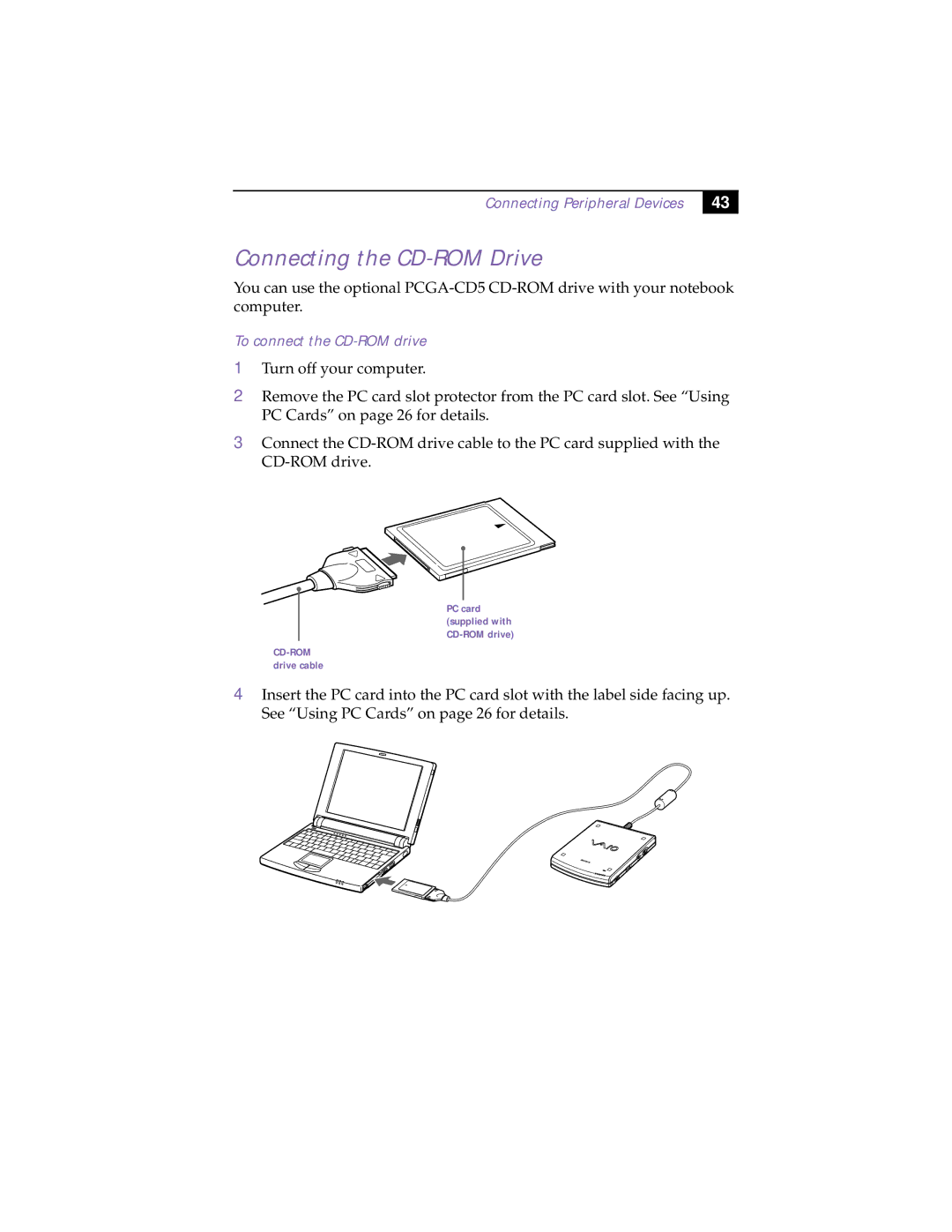PCG-505TS, PCG-505TX specifications
The Sony PCG-505TX and PCG-505TS are part of Sony's renowned line of laptops that were particularly notable during the late 1990s. These models are part of the Vaio series, which has become synonymous with innovation and design. Their lightweight structure and sleek aesthetics distinguish them, making them attractive choices for users seeking portability without compromising on performance.One of the primary features of these laptops is their display. The PCG-505TX and PCG-505TS boast a 12.1-inch XGA (1024x768) screen, providing sharp visuals and excellent color accuracy for the time. This compact screen size, paired with high resolution, makes them ideal for both productivity tasks and multimedia consumption. The panels are known for their clarity and brightness, enhancing the user experience.
In terms of performance, these laptops were equipped with Intel processors, typically the Pentium II series, offering a suitable balance of power and efficiency for everyday computing tasks. The systems generally came with 64 MB of RAM, expandable to 128 MB, allowing for multitasking capabilities, which was a significant feature at the time. Storage options included a 6 GB hard drive, providing a reasonable space for applications and files, considering the era's computing demands.
The PCG-505TX and 505TS models showcased a variety of connectivity options, including USB ports, a CD-ROM drive, and an optional DVD drive, accommodating various external devices and media formats. Furthermore, the laptops supported modem connections, which were essential for internet access in the late 90s, enabling users to stay connected.
Another notable aspect of the PCG-505 series is the battery life. Designed to provide adequate usage without frequent recharging, these laptops were perfect for students and professionals on the go. Additionally, Sony's engineering included a range of software bundled with the system, enhancing the overall functionality and user experience.
Built with a durable chassis, the laptops also featured a comfortable keyboard and trackpad, making extended usage convenient. Overall, the Sony PCG-505TX and PCG-505TS epitomize a blend of performance, portability, and style, making them memorable models in the history of portable computing. Users who owned these laptops appreciated their reliability and the robust feature set that reflected the needs and trends of their time.

